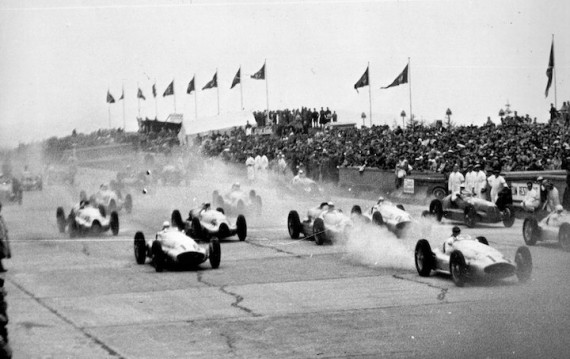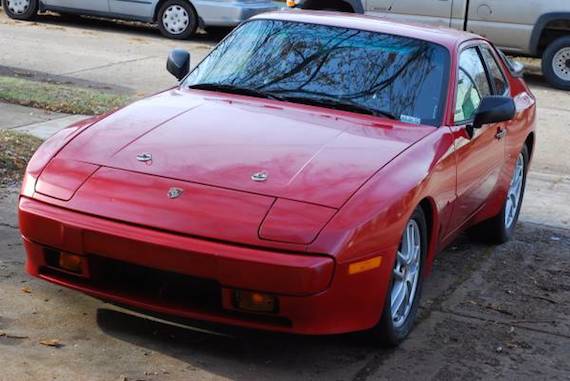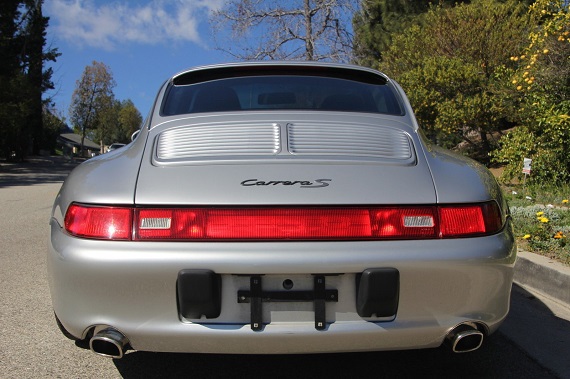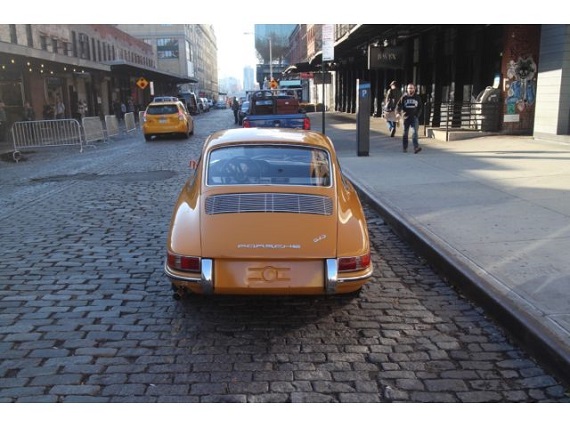Engine swaps are a popular topic of conversation here at GCFSB. From early examples of the BMW 3 series with late model inline-6 swaps to Volkswagen Campers with Subaru lumps hiding out back, the possibilities are endless. Another trend has been V8 swaps into the venerable Porsche 944. This Porsche 944 comes to us via our friends at BlythBros. It’s not a purebred V8 Porsche like the 928, but one glance at this tuned-up 944 and you’d have a hard time believing it wouldn’t be a hoot to drive.
Category: Porsche
The rebirth of the S provided some renewed invigoration to the 911 lineup, ironically just as the days of the 911’s air-cooled engine were coming to a close. It had been nearly 20 years since an S badged 911 had rolled out of the factory and Porsche chose during the initial re-entry into the market to offer it only as a Carrera 4. These cars were quickly dubbed the “Turbo-look” as they shared the wider rear body and braking of the Turbo, but retained the standard 993’s naturally aspirated 3.6 liter flat-6. A year later a Carrera 2S would hit showrooms, providing customers an abundance of choice when choosing their 911. At that point you could get just about whatever configuration you wanted. Here we will look at an example of each of the S models, which share some significant similarities outside of that basic model designation, though with one significant difference between them. Similar color, similar mileage and they appear to be in similar condition. We’ll start with the Carrera S:
CLICK FOR DETAILS: 1997 Porsche 911 Carrera S on eBay
2 Comments
Start of the 1939 German Grand Prix with Auto Union Type D and Mercedes-Benz W154 M163s – their last meeting in the nation of their birth
Yesterday saw an interesting comparison in racing; in F1, Mercedes-Benz once again dominated the field with seeming ease, dictating the pace and watching the strategy of its competitors from Maranello. While truth told my focus remained squarely on the Formula 1 race, there were several other popular race series running concurrently; both wildly popular Moto GP and World Endurance Championship races were contested as well. Notably, Audi won the WEC Silverstone 6-hour contest, continuing its quite remarkable run in endurance series amidst rumors that they could be heading to Formula 1. The question posed by me in my conclusion to the investigation of the Silver Arrows period is simply if the racing was necessary? There were other options in terms of racing for both companies to explore, and indeed they could also have taken the Opel strategy in no racing at all. Did the companies choose the right route?
I’d like to take this opportunity to thank our readers for the positive feedback to this feature. It’s been wonderful for me to revisit this research and have the enthusiast community enjoy it. I’d also like to thank Dan and Paul at GCFSB for not only affording me the opportunity to put this research up, but indeed for encouraging me to do so. Though they’re not likely to be paying attention I’d like to thank the Saxony State Archives in Chemnitz and the staff at the Mercedes-Benz factory archives, both of which were very welcoming and accommodating during my time there. Lastly, I’d like to thank my family who has been both encouraging and patient while I’ve spent countless hours working on this site. Without further ado, please enjoy the conclusion!
CONCLUSIONS : WAS RACING NECESSARY?
I have expressed my fondness for the Porsche 912 for its overall simplicity as well as the potential it offers to buyers seeking vintage Porsche 911 style, but without the 911 price. These were entry-level cars that bore a strong resemblance to their more famous big brother, but were fitted with a flat-4 rather than the 911’s flat-6. There were even claims that the 912 was a better-handling performer than the 911 due to its lower rear weight and thus better balance. For the most part, any 912 will fit that bill. The example we see here will be somewhat of an exception to the typical rule. Due to their entry-level nature few 912s have survived in excellent condition so most of those that do survive tend to come at a nice value. Now and again we come across one that appears to have been kept in much better condition throughout its life. While values for those examples still won’t come close to a similar-condition 911, they still command pretty good money. Here we have one aiming for the top of the market: a Bahama Yellow 1966 Porsche 912, located in New York, with 75,000 miles on it.
CLICK FOR DETAILS: 1966 Porsche 912 on eBay
2 CommentsThe Porsche 996 is arguably the best deal going in the rear-engined Porsche world. I say arguably because there are many who utterly detest the water-cooled replacement for the venerable air-cooled 911. On top of the revision in power, the 996 power unit has come under scrutiny for potential failure of the intermediate shaft bearing. But let’s be honest for a second; Porsches are expensive cars that can be very expensive to maintain, regardless of chassis and configuration. And in terms of driving experience, the 996 was quite fun. It was not the fastest or wildest version of the 911, but in two-wheel drive Carrera form it was great fun. I was lucky enough to drive a brand new 40th Anniversary Carrera around a race track, and though it was certainly a road-biased machine, the brakes, suspension, transmission and importantly engine and soundtrack were a stirring experience. Add some real track-dedicated modifications to one, then, and it should be a great dual-purpose weapon:








